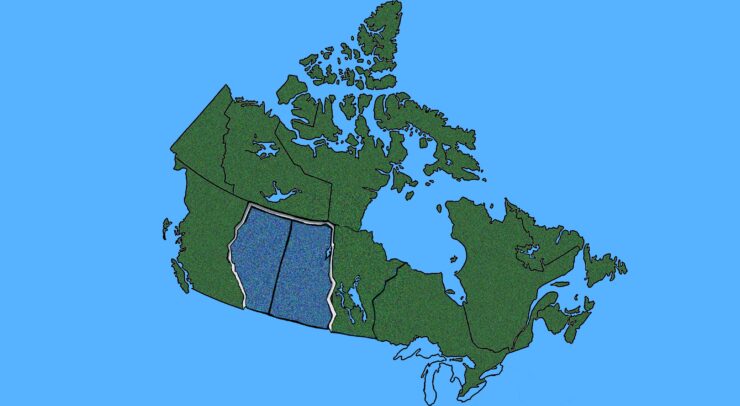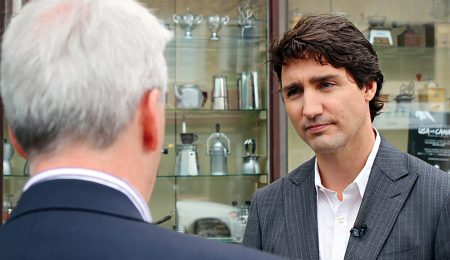At the helm of a minority government, PM’s climate policy is just one reason he lost support of many Western Canadians
Just months ago, most Canadian voters would not have understood the term “Wexit.” Now, a “Western Exit” is looking increasingly plausible. The phrase now signifies a growing separatist movement among Canada’s Western provinces, mainly centred in Alberta and Saskatchewan.
Fuelled by the re-election of Liberal Prime Minister Justin Trudeau and decreased development in Canada’s oil and gas sector, the Wexit movement has only grown since the Oct. 21 federal vote.
This shift among the western electorate is partially due to the 2015-16 downturn that destabilized the province of Alberta. Following a dip in oil prices in late 2014, the province hurdled into recession. At the peak of the downturn, in July 2016 the province’s unemployment rate lay at 8.6 per cent — 1.6 per cent higher than the national average, according to Statistics Canada.
The recession gutted communities and intensified anger toward the Liberal government — a government perceived by many as being ignorant of the needs of Western provinces. In 2019, the province still encounters sluggish growth, as uncertainty surrounds the Trans Mountain pipeline expansion and trade woes with China inhibit agricultural exports. This is a stark reality for the region previously labelled as Canada’s economic powerhouse.
Now applying to gain federal party status, Wexit Canada plays on these economic anxieties.
What is Wexit?
The proposed party bases its platform on decreased taxes; the loosening of industrial regulations; sovereignty from Canada, Britain, and the United Nations; and the protection of individual rights.
These policies run contrary to more interventionist promises made by Prime Minister Trudeau in his 2019 re-election campaign. In a Sep. 24 press conference, he vowed to implement “legally binding” emissions targets to make Canada carbon neutral by 2050.
Additionally, at an Oct. 8 campaign stop in Iqaluit, the leader announced a plan to phase Indigenous and northern communities off of non-renewable power.
These major proposals compounded with prior obligations under the Paris Agreement and election promises to discontinue the use of single-use plastics, encourage green renovations to Canadian homes, support tree-planting initiatives, and give more Canadian lands and waterways protected status.
The recent success of the Wexit movement indicates a growing resentment toward these policies. At a Nov. 16 rally in Calgary, Wexit Canada leader Peter Downing stated: “We are going to build our pipeline and Quebec is going to pay for it.”
He was alluding to remarks made by U.S. President Donald Trump, but also to Quebec’s lack of support for the Trans Mountain pipeline expansion, and Trudeau’s recent meetings with Quebec Premier Yves-François Blanchet.
Facing fierce opposition from the western provinces, it is unclear if Trudeau will balance their requests with his government’s climate objectives.
The Canadian Association of Petroleum Producers (CAPP), an advocacy group representing approximately 80 per cent of Canada’s oil and gas industry, does not see the two factors as mutually exclusive.
In an email to The Fulcrum, a spokesperson for the organization responded to questions regarding Canada’s oil and gas industry.
The “industry does not believe environment and energy development is an either/or situation,” the spokesperson stated. “We can help meet environmental commitments while still maintaining responsible oil and natural gas development through technology and innovation.”
When asked to comment on the Wexit Canada platform — which describes wind and solar energy as “unreliable” — the CAPP reiterated that it “is not an either/or argument”, and that Canadians “need all sources of energy to grow (and) … meet the continuously rising demand for energy.”
Additionally, the organization highlighted renewable energy projects undertaken by some of its members, including wind farms and renewable fuel production directed by Suncor and Royal Dutch Shell.
Having cake and eating it, too
The CAPP did not rule out collaboration with Western petroleum producers if the provinces were to separate, stating that they “always have, and will continue to work with governments of all levels and political stripes in every corner of the country.”
In all, the organization’s outlook was optimistic, stating that “Canada’s oil and natural gas industry can offer solutions to the biggest challenges facing our nation,” from the cost of living to promoting reconciliation with Canada’s Indigenous communities. But others are not so certain.
Nicholas Rivers, Canada Research Chair in Climate and Energy Policy, also spoke to the Fulcrum through email.
When asked whether the federal government could support the expansion of the oil and gas industry while simultaneously meeting its targets under the Paris Agreement, Rivers stated that the “expansion of high-carbon economic activity such as oil and gas extraction” make the targets “more challenging to meet, and less likely that (they) will be met.”
Rivers also commented on the Trans Mountain pipeline expansion, a source of contention between the Wexit movement and the province of Quebec. “If the Trans Mountain expansion is finished,” he says that he “would expect an increase of around five-20 Mt (Megatonnes) in Canada’s greenhouse gas emissions.”
He also notes that increased profits due to the pipeline would likely spur further investment and extraction, leading to higher greenhouse gas (GHG) emissions.
Canada’s 2030 target under the Paris Agreement is to reduce its greenhouse gas emissions by 30 per cent from 2005 levels. This would entail 513 Mt of GHG emissions, instead of the 732 Mt emitted in 2005. Projections released in mid-2019 by Navius Research and the Canadian Broadcasting Corporation show that the federal government, even when implementing recent climate policies, is not on track to meet these targets.
In general, Rivers did not say that the federal government’s climate goals and Canada’s oil and gas industry are fundamentally incompatible, though he acknowledged “that there’s some tension between them.”
On the other hand, Wexit Canada organizers argue that western prosperity cannot be ensured by the Canadian government.
In his Nov. 16 rally, leader Peter Downing invoked the disparity between the east and west in Canada’s House of Commons. At the time of Parliament’s dissolution in September, the provinces of British Columbia, Alberta, Saskatchewan, and Manitoba collectively held 101 seats, while Ontario and Quebec 198.
Downing argued that the higher representation of Ontarian and Québécois interests in Parliament is an impediment to western interests. When outlining the objectives of the Wexit movement, Downing said: “it’s not white supremacy; it’s not about any kind of race or religion, or who you date, or what you drive; it’s about Liberal supremacy.”
With such seething resentment toward Trudeau and his policies, it is hard to tell if his government can balance environmental concerns and the sensibilities of western separatists.
Though some organizations remain hopeful, data shows that Canada is already behind in meeting its climate goals. And, with hard-line politicians like Downing gaining prominence, the path to cooperation between Ottawa and Canada’s heartland appears to be a challenging one.





